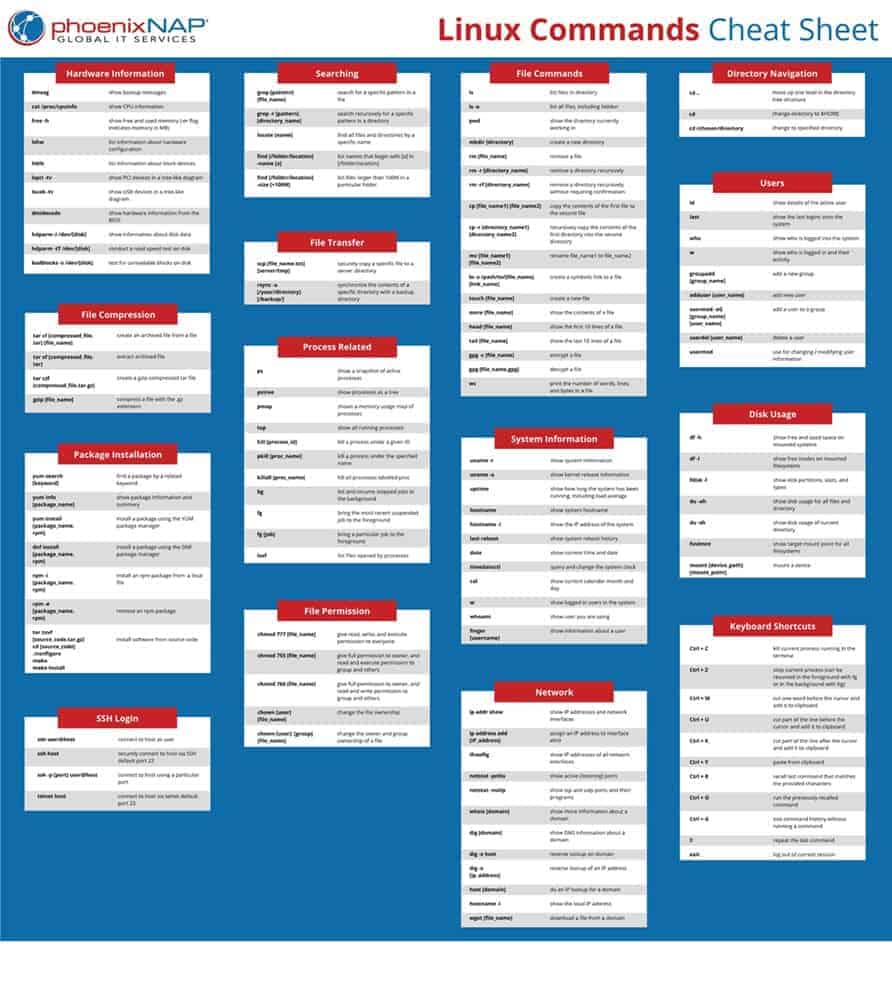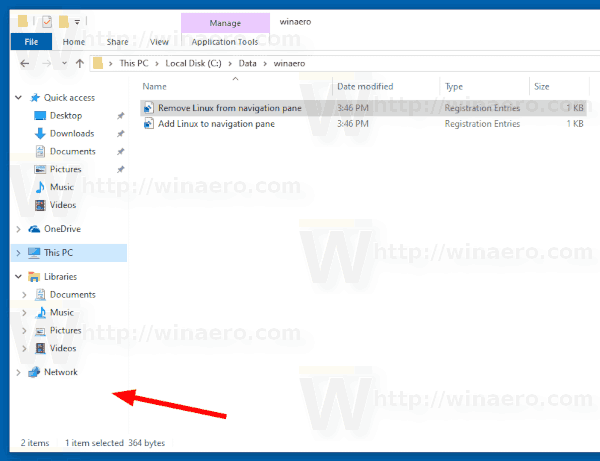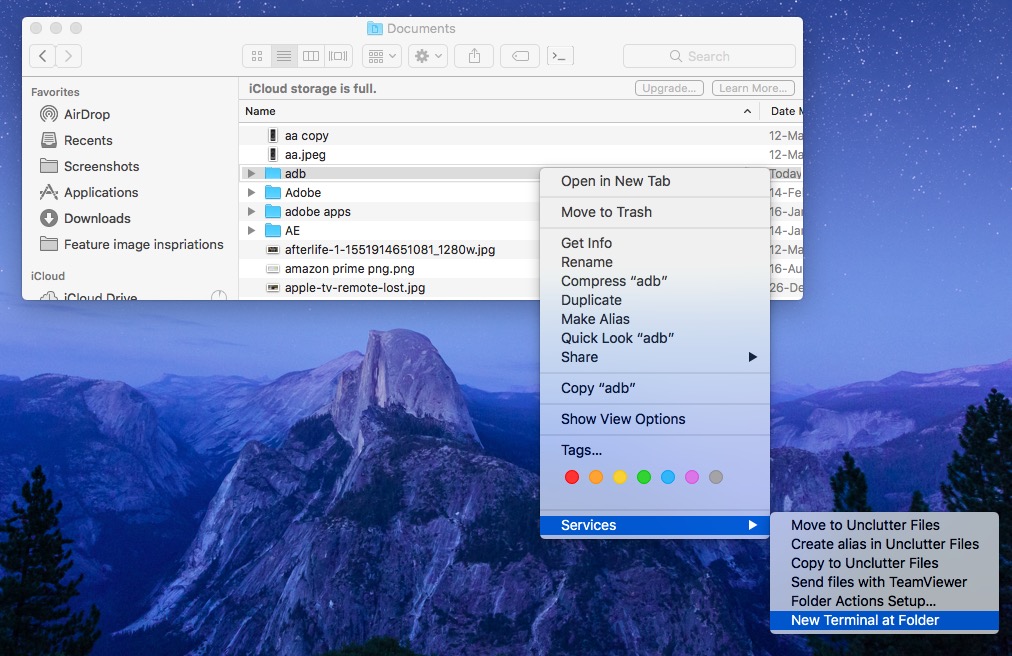The Tab key in your keyboard auto-completes names of directories and recordsdata you are beginning to type. If you are going to cd into ~/Documents, then all you should style is cd ~/Doc after which press Tab. This is not only a pleasing convenience, it is additionally a method to forestall error. If you are urgent Tab and nothing's being auto-completed, then almost certainly the file or listing you suppose that is in a location is not in reality there.
The ls command is used to record data or directories in Linux and different Unix-based working systems. If you would like to maneuver contained within the tree, one possibility is to make use of relative paths. If you're in /home/sharon, then typing cd Downloads will work, for the reason that Downloads is an instantaneous youngster of your present directory. If you're within the subfolder Documents and need to vary listing to Downloads, it's a must to go up (..) after which to Downloads.
The cd ("change directory") command is used to vary the present working listing in Linux and different Unix-like working systems. It is likely one among several simple and regularly used instructions when engaged on the Linux terminal. … Each time you work together together with your command prompt, you're working inside a directory. This is an instance of adjusting a listing by giving an absolute path. In Linux, each file and listing is underneath the top-most directory, which known as the "root" directory, however referred to by a single main slash "/". An absolute path shows the situation of a listing in relation to this top-level directory.
This lets us confer with directories in an unambiguous method from anywhere within the filesystem. But, what in case you're in root (i.e. too many files) or wish to cd to a different listing you employ continuously or have used recently. Fasd maintains a database of current directories and files. It comes with some terrific scripts with readline completion to can help you style 'z ' and it will get on to your recent/frequent listing anywhere on the system. The tab completion permits you to validate it it taking you the place you need to go or change to a different option. You are normally in a selected listing when making use of the command line interface.
You can discover this listing through the use of the pwd command which prints out absolutely the path to the present working directory. The surroundings variable PWD additionally holds the worth of the present working directory. We've discovered the way to make use of pwd to search out our existing location inside our file system. We've additionally discovered the way to make use of cd to vary places and ls to record the contents of a directory.
Now we're going to gain knowledge of some further instructions for transferring spherical inside our file system. The absolute path to a listing is relative to the basis folder (/) of the file system. Irrespective of what your present working directory, absolutely the path to a folder is usually the same. Using absolute path is beneficial when writing shell scripts, as you is probably not executing the script from the identical listing all of the time.
When navigating to a selected listing on the file system, there are often two sorts paths to the listing one can use. One is the relative path and the opposite is absolutely the path. The relative path is relative to the present working directory.
You can return to the father or mother listing of any present listing through the use of the command cd .. You additionally can return to your very own residence listing (e.g. /users/jpalomino ) at any time applying the command cd ~ . On the opposite hand, the relative pathname is derived from the present working directory. You can transfer up and down the listing tree effectively with the cd command if you are well-versed on relative paths. The Linux cd command provides a number of methods to navigate and alter the working listing applying the terminal window. It allows you to modify directories applying relative and absolute paths, transfer to father or mother or root directories, or discover directories with incomplete names.
Where an absolute pathname begins from the basis listing and results in its destination, a relative pathname begins from the working directory. To do this, it makes use of a few unique notations to symbolize relative positions within the file system tree. An absolute pathname begins with the basis listing and follows the tree department by department till the trail to the specified listing or file is completed.
For example, there's a listing in your system by which most packages are installed. This means from the basis listing there's a listing referred to as "usr" which accommodates a listing referred to as "bin". To change the working listing we use the cd command.
To do this, we kind cd adopted by the pathname of the specified working directory. A pathname is the route we take alongside the branches of the tree to get to the listing we want. Pathnames will be specified two distinct ways;absolute pathnames or relative pathnames. Use both absolute pathnames or native pathnames with the cd command.
An absolute pathname starts offevolved on the basis listing whereas an area pathname is relative to the present working directory. Ls is the command, with an possibility -F and anargument /. Sometimes selections and arguments are known as parameters.
A command would be referred to as with multiple possibility and multiple argument, however a command doesn't at all times require an argument or an option. An absolute path at all times starts offevolved with a ahead slash (/) whereas a relative path does not. The absolute path is beneficial in conditions whereas you shouldn't must imagine the present working directory. Before altering directories, we could must record the present working path or different path directories. The ls command would be utilized to record recordsdata and directories. For example, we have now two relative paths under that might change the working listing to a folder referred to as "Bookshelf" if it exists inside the present working directory.
Therefore, our existing working listing has modified to Desktop. Linux or UNIX-like system use the ls command to listing recordsdata and directories. However, ls doesn't have an choice to listing solely directories. You can use mix of ls command and grep command to listing listing names only.
Before you need to use the cd command to its full extent, you have to know the big difference between absolute and relative pathnames. The absolute pathname is the full path to the directory, ranging from the / folder. Since the command line interface can't grant graphic footage of the file system structure, we will need to have a special method of representing it.
To do this, consider the file system tree as a maze, and that we're standing in it. At any given moment, we will be found in a single directory. Inside that directory, we will see its data and the pathway to its mum or dad listing and the pathways to the subdirectories of the listing wherein we're standing. Now, as you've gotten discovered to maneuver from one listing to another, the subsequent step is to view the contents of the listing you're in.
The ls command is used to view all of the recordsdata and folders present within the present directory. These two instructions have the identical effect, they equally take us to the .hidden directory. The first makes use of absolutely the path, giving the complete tackle from the house directory.
The second makes use of a relative path, giving solely the handle from the working directory. So far, when specifying listing names, or perhaps a listing path , we now have been employing relative paths. When you employ a relative path with a command like ls or cd, it tries to seek out that location from the place we are, as opposed to from the basis of the file system. Try navigating as a result of your system employing the terminal. As lengthy as you prohibit your self to the cd, ls, and pwd commands, you cannot do any harm, and the apply will enable you get snug with the process.
Command line shells on Windows most likely use the Windows API to vary the present working directory, whereas on Unix structures cd calls the chdir() POSIX C function. This signifies that when the command is executed, no new course of is created emigrate to the opposite listing as is the case with different instructions comparable to ls. This is because, when a brand new course of is created, baby course of inherits the listing through which the mother or father course of was created. If the cd command inherits the mother or father process' directory, then the target of the command cd won't ever be achieved. Linux cd command is used to vary the present working listing ( i.e., through which the present consumer is working). The "cd" stands for 'change directory.' It is some of the steadily used instructions within the Linux terminal.
Navigate To A Directory Linux File administration and directories mkdir command creates a brand new directory. Cd command stands for "change directory" permits you to transfer across the file system. Cp command copies the documents and mv command strikes the files.
However, to vary the present working listing to of the place you are, you need to use absolutely the path. Any path that starts offevolved with a ahead slash / is an absolute path. If you recognize you're within the basis of the place you would like to go, there's not a lot that's quicker than that. There are different fzf key bindings that may speedily discover a file beneath your present listing and insert it within the command line you're typing. This is but one more useful approach to modify between diverse directories speedily and easily. In this method, we create shortcuts to incessantly used directories and use the shortcut identify to go to that respective listing with out having to style the path.
If you are working in deep listing shape and stack of directories, this way will drastically avoid wasting time. You can find out the way it really works within the information given below. As said earlier, you begin within the house listing whenever you open the terminal. To transfer across the system to entry information and folders, you could repeatedly change directories. For this purpose, we now have the "Change Directory" or the "Cd" command.
It is used for shifting from one listing to another. And ., you might additionally see a file referred to as .bash_profile. This file most of the time accommodates shell configuration settings. You might see different data and directories starting with .. These are often data and directories which might be used to configure totally different packages in your computer. Is used to stop these configuration data from cluttering the terminal when an ordinary ls command is used.
Alright, thus far on this tutorial we talked about navigating files/folders and listing directory/files. In subsequent tutorial we'll study several sorts of view operations. Please do like and share my tutorials in the event you think you discovered some factor helpful by analyzing my tutorials. On Unix-like working systems, the cd command ("change directory") variations the shell's present working directory. Cd command might possibly be utilized with the unusual signal like .. Which means the mother or father listing of the present working directory.
It will in simple terms exhibit one degree higher or father or mother directory. Print the present working listing with the pwd command. Every listing within the Linux listing shape is separated by and begins with a ahead slash (/).
In different words, ls and not using a path will present the contents of your present directory. A relative path is a path that starts offevolved from the present working directory. For a path to be relative, it have to commence off both with a dot and a slash (./) or nothing. For example, it is easy to create a brand new listing beneath paperwork referred to as assignments. Then, it is easy to navigate into the brand new listing referred to as assignments, and print the present working listing to envision the brand new path.
You can return to the mother or father listing of any existing listing by way of the use of the command cd .., because the comprehensive path of the present working listing is known by Bash. Often, it's your decision to vary the present working directory, so to entry diverse subdirectories and files. The command line is a textual content interface on your computer. Just like Windows Explorer on Windows or Finder on Mac OSX it enables you to navigate by way of the records and folders of your computer, however is totally textual content based. The command line works by typing instructions towards a prompt, which then will get exceeded to the working system of the pc that runs these commands.
Note that in these tutorials, the phrases "folder" and "directory" are used interchangeably. The present working listing is the listing through which the consumer is at present working in. Each time you work together together with your command prompt, you're working inside a directory. By default, once you log into your Linux system, your present working listing is about to your property directory. Cd command in linux generally recognised as change listing command.
The dwelling listing has a unique character assigned to it---the ~ character. On a Linux system, the /home listing is a unique listing reserved for a user's private files, programs, and subfolders. When you log in to your system, the house listing is about because the present working listing by default. This will show an inventory of folders in your present working listing and hidden files. This is essentially the most frequent technique that I use day-to-day to navigate between a stack of directories.
The "Pushd", "Popd", and "Dirs" instructions comes pre-installed in most Linux distributions, so do not hassle with installation. These trio instructions are pretty helpful when you're working in a deep listing construction and scripts. For extra details, test our guideline within the hyperlink given below. After analyzing this tutorial, you ought to be capable of use the Linux cd command to navigate and alter the present working listing within the terminal window. File names that start with a interval character are hidden.


























No comments:
Post a Comment
Note: Only a member of this blog may post a comment.